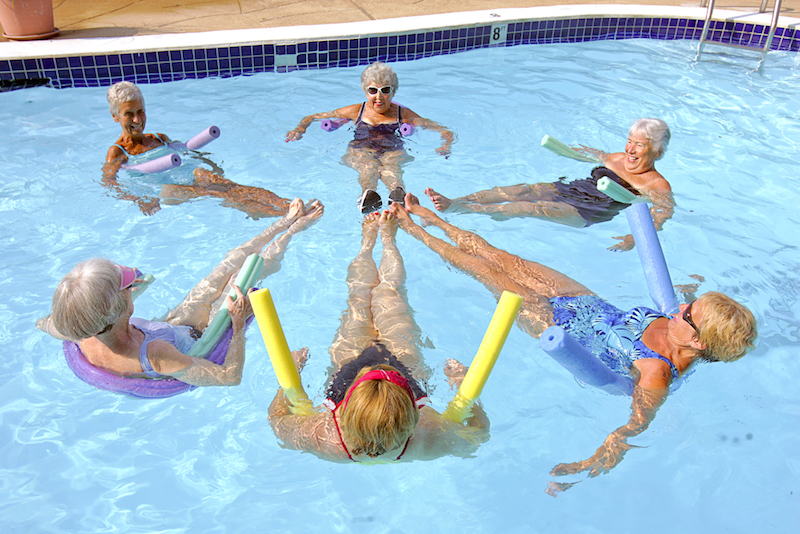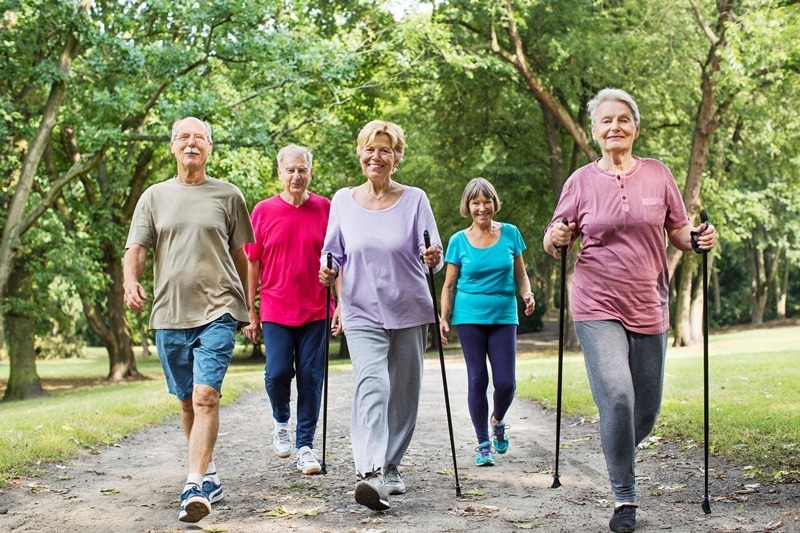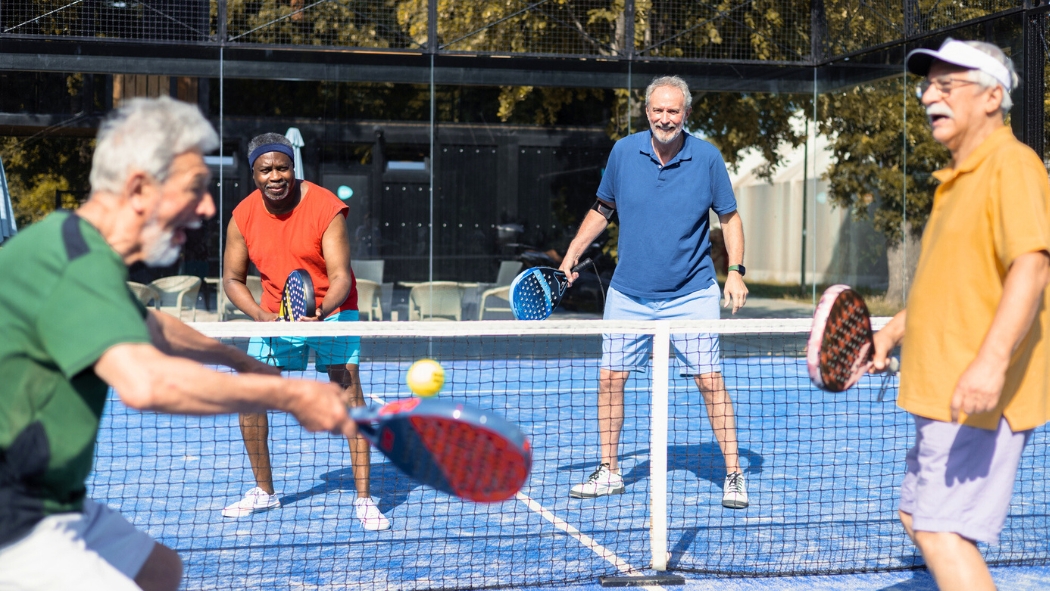6
Section One: The Fundamentals
A) Keywords
Exercise 1:
Provide a brief definition of one of the padlet keywords for this week.
|
The fourth stage is referred to as the “last” stage of life where people find themselves to be in a deep old age. This stage is not something that is socially congratulated, but rather seen as a social deterrent. Often, those in their fourth age cannot rely on solely on themselves, therefore they are seen as weak. They are not able to contribute much to society because of their old age, and simultaneously do not stimulate the economy in the way citizens are expected to. They become dependent on others, prominently their children and grand-children, and this is seen as an even bigger weakness to society. They are then treated with less respect and less dignity, and this notion causes ageism. |
B) The Social Significance of Aging in Sport
Exercise 2: Notebook Prompt
How is old age popularly represented today? Find an image online that you think exemplifies one defining attitude towards old age and paste in your notebook below with a brief explanation of what this image means to you.

I feel like this photo exemplifies the common attitude people hold towards old age, and that is infantilizing them. Often times, seniors are compared to toddlers because of their attention span and such. In this picture, they have sat a dozen seniors in a room in front of a TV, something very similar to what we do with toddlers. It shows that in reality, as a society we have decided to not want to deal with older folks because they are seen weak, which has somehow equated to less valuable.
Exercise 3: Notebook Prompt
What does the article (referencing another study by Dionigi) mean by its statement that sport can help aging people to simultaneously “accept and resist the ageing process” (572)? Respond by audio or text and find paste two images sourced online into your notebook showing how sport might help aging people to both accept and resist the aging process.

 I found these to images to portray how sport can help aging people accepts and resist their ageing process. Engaging in sport in the first place allows for aging folks to stay within the 3rd age, which socially is much better for them due to the agism that permeates in society. It allows them to prove they are not “useless” and “weak”, common stereotypes that are associated with the 4th age. However, these pictures show how engaging in sport also allows them to accept aging. The first sport is an assisted swim class, and the second is a walking group, where walking sticks are encourages. So while they are engaging in sport, they also become acutely aware of their abilities. With old age, mobility does decrease, and by participating in these types of assisted sports, they can accept that their bodies are not able to do what they used to do in terms of sports.
I found these to images to portray how sport can help aging people accepts and resist their ageing process. Engaging in sport in the first place allows for aging folks to stay within the 3rd age, which socially is much better for them due to the agism that permeates in society. It allows them to prove they are not “useless” and “weak”, common stereotypes that are associated with the 4th age. However, these pictures show how engaging in sport also allows them to accept aging. The first sport is an assisted swim class, and the second is a walking group, where walking sticks are encourages. So while they are engaging in sport, they also become acutely aware of their abilities. With old age, mobility does decrease, and by participating in these types of assisted sports, they can accept that their bodies are not able to do what they used to do in terms of sports.
Exercise 4: Notebook Prompt
Who are the groups less likely to have extensive opportunities to take part in sports, according to Pike? How does privilege factor into aging and sport? (200 words max)
| According to Pike, the groups who are less likely to have extensive opportunity to take part in sports include, those with disabilities, those in the 4th age who are significantly frail and live in assisted-living, some minority ethnic groups and those who live in rural areas. With this in mind, it is clear to see where privilege lies in terms of opportunity for sport. Firstly, being able-bodied is a significant privilege in society due to how structurally ableist society is. Second, those who are younger, not frail, and do not live in assisted living, also hold another form of privilege by being able to be independent. Third, if you are white that is a clear privilege in regards to sport because of the systematic racism that prominently exists, as well as a monetary privilege. Because of systematic racism, white people statistically are more economically secure compared to ethnic minorities. Lastly, living in an urban area can be a privilege, but I also see living rurally to be a privilege. If you are forced into rural living that is a different story, but often people choose to live rurally, and have access to a vehicle for transportation.
|
Exercise 5: Padlet Discussion
Why do you think age discrimination is “reported more than any form of prejudice” with older people presented as a threat to social values and interests? Feel welcome to use video in your responses. Paste your comments (or transcript of your video) below!
|
I believe age discrimination is reported far more often than any other form of prejudice is because young people are thought of as the “ideal” person. Therefore, aging is seen as a detriment to a person due to the stereotypes that are associated with it. For example, at a certain age you are expected to stop working. This is not because society determines that older folks need some time to relax as they grow old, it is because you are seen as weaker the older you get, regardless of your genuine health. Once you reach a certain age, people associate that with helplessness, and they begin to value the person less because they may require some assistance. I think this is completely due to the neo-liberal expectation of total independence. It is almost frowned upon to ask for help, so when an older person asks for help, they are no longer seen as an “ideal” citizen who can work and live independently.
|
B) Older Women and Sport
Exercise 6: Notebook Prompt
What differences do you see in these ads? Which one is more inclusive? How is age represented or not represented in each? Answer these questions in your notebook.
| Between these two ads, I found the This Girl Can ad to be more inclusive regarding race, and age. In the Nike ad from 2020, white it showed gender and ethnic inclusivity, there was a lack of representation regarding age. However, in This Girl Can, all types of individuals were included, except for men. While this can be disputed as non inclusive, I think the opposite. Men are constantly given space, where women are not socially allowed to be. Therefore, not including men in one single ad doe snot do them any harm. Also This Girl Can provided body inclusivity as well. They featured a disabled athlete, as well as women who fluctuated in weight and size. However, the root of its inclusivity came from how age was represented. Women of all ages were engaging in sport, while the Nike one included only those who appear to be young and youthful. IN This Girl Can we are able to see an older asian woman playing basketball expertly, and I believe this is an example of how important representation is, especially in sport. |
Exercise 7: Notebook Prompt
In her article, “Assessing the sociology of sport: On age and ability,” Elizabeth Pike references a “trend towards a ‘feminisation of ageing’, with many women living longer than men” (573). Do you agree that aging has been “feminized” in this way? How? Answer these questions in your notebook.
| I do agree with Pike regarding the feminisation of ageing in regards to women living longer than men. Because of this fact, older women face a unique and significant form of discrimination based on their age. These women often find themselves in the fourth age, which already comes with forms of discrimination; but considering the intersection of their gender misogyny has found its way to impact women. Women — as it is — already are compensated less than men in terms of work. Therefore, when they either choose to retire, or are forced into retirement, they are left with less than an older man would, as well as a smaller pension. This creates much more economic and social insecurity for older women. While forced retirement impacts men of old age, they have been better compensated throughout their work life, and receive a larger and better pension. Furthermore, in a heterosexual relationship, if the man dies first, the woman is left by herself. With social gender norms in place, women are expected to take care of the home which includes cooking, cleaning, and other similar chores. These older women are expected to keep their lives in order as if they still had another person in the home, and therefore takes on extra work. Society does not take this into consideration and thus, women of old age experience a unique discrimination. |
Section Three: Module Mini Assignment

Anselmi, E. (April 8, 2024). Is a park still a park if it’s paved? The Narwhal. https://thenarwhal.ca/opinion-peterborough-pickleball-paves-park/
Olympic Channel. (September 11, 2018). Ageism is the new sexism, says trailblazer for women’s rights in sports. Olympic Channel. https://www.olympics.com/en/news/50-years-later-kathrine-switzer-is-fighting-a-new-discrimination
Stevens, C. (June 11, 2015). Athlete claims age discrimination almost cost her a spot at the Pan Am games. Global News. https://globalnews.ca/news/2049181/athlete-claims-age-discrimination-almost-cost-her-a-spot-at-pan-am-games/

